Results 2,401 to 2,410 of 12096
Thread: Anandtech News
-
11-28-12, 11:30 AM #2401
Anandtech: Update on Samsung SSD 840/840 Pro Failures
In our review of Samsung's SSD 840 Pro I noted that my drive died shortly after I completed testing. Samsung sent me a replacement, which also stopped working (although it still pulled current) after a couple of days. Kristian's Samsung SSD 840 review sample shared a similar fate.
I spoke with Samsung about this problem a couple of weeks ago and was told that there was a bug in the pre-production firmware (version 2B0Q/5B0Q for 840 Pro/840) loaded on our drives. All retail samples should ship with a newer firmware revision (3B0Q/6B0Q) that have this bug fixed. To confirm what firmware revision is on your drive, look at the end of the hardware id string for the SSD in Device Manager.
Samsung sent me an 840 Pro with the updated firmware and so far I haven't had any issues. I'm trying to retrace my steps in bricking the drive and things are looking good thus far. As always, if things change I will  update you all.

More...
-
11-28-12, 11:30 PM #2402
Anandtech: AMD Trinity Buyer's Guide
While AMD's second generation "Trinity" APUs (Accelerated Processing Units) have been available in pre-built desktops and laptops for many months now, the chips and accompanying motherboards themselves have only been available in retail channels for DIY desktop builders for a few weeks. Trinity is based on AMD's newest "Piledriver" CPU and "Cayman" GPU architectures and uses socket FM2. Like its Llano APU predecessor, the Trinity APU offers respectable CPU performance and discrete-level GPU performance on the same die, all with low power consumption. While APUs have been very popular in laptops, we outline in this guide how Trinity can be pressed into service on the desktop. Read on for our recommended general home/office usage, HTPC, and budget gaming system builds.

More...
-
11-29-12, 02:00 PM #2403
Anandtech: Microsoft Announces Surface Pro Pricing and Availability: 17W IVB Starting
Last month I reviewed Microsoft's Surface RT tablet, and came away generally impressed. The form factor and attention to detail were both much better than expected from Microsoft. The integration of the touch/type covers into the design was very well executed in my opinion. That being said, Surface RT seemed to me like a great start but not the perfect product. I would love to see a Cortex A15 based version with some minor tweaks. We'll likely get that next year, but before then there's one more Surface tablet that we'll meet: the Surface Pro.
Surface RT is Microsoft's Windows RT (Windows on ARM) launch vehicle, while Surface Pro is based on Intel x86 hardware. Despite the funny wording in today's blog post, Surface Pro uses an Ivy Bridge based Core i5 (ULV) processor with Intel HD 4000 graphics. Contrary to what I assumed initially, Surface Pro will launch with a 17W Ivy Bridge CPU - so this is the same chip you'll find in modern Ultrabooks. Without a doubt we'll see a Haswell version sometime next year, but not at launch. I wondered if we might see Microsoft use Intel's upcoming 10W Ivy Bridge, but at this point that seems unlikely.
Surface Pro keeps the same display size, but increases tablet thickness by 43% over the RT version. Weight is also up by half a pound. Screen resolution goes up as well, at 1920 x 1080. Memory capacity also increases to 4GB, and Surface Pro comes with much more NAND on-board. With a 7-series chipset you get SATA support, so my money is on Surface Pro having a full blown SSD inside instead of something eMMC based.
Battery capacity goes up to 42Wh, an increase of 33%, putting it about on par with the 3rd and 4th generation iPads. Charger size also goes up to 48W compared to 24W with the RT version.Microsoft Surface Comparison   Surface RT Surface Pro Apple iPad 4 Dimensions 10.81 x 6.77 x 0.37" 10.81 x 6.81 x 0.53" 9.50 x 7.31 x 0.37" Display 10.6-inch 1366 x 768 PLS 10.6-inch 1920 x 1080 PLS? 9.7-inch 2048 x 1536 IPS Weight 1.5 lbs 2.0 lbs 1.44 lbs Processor NVIDIA Tegra 3 Core i5 with HD4000 Graphics (Ivy Bridge) Apple A6X Connectivity WiFi WiFi WiFi , Optional 4G LTE Memory 2GB 4GB 1GB Storage 32GB or 64GB 64GB or 128GB 16GB—64GB Battery 31.5 Wh 42.0 Wh 42.5Wh Starting Price $499 $899 $499
The big news is we now have pricing for Surface Pro: $899 for the 64GB model and $999 for the 128GB model, both available in January 2013. Both versions come with a Surface pen, but neither includes a touch or type cover. Microsoft's Surface Pro pricing is clearly higher than any other ARM based tablet, but I'd look at it more as an Ultrabook/MacBook Air alternative. I'll reserve final judgement for when I get my hands on a review sample, but I'm pretty interested to see how the Pro does in our tests. This could end up being one of the better Ultrabooks. I do wish Microsoft had thrown in a touch or type cover into the bundle though, that would make it a real alternative to a standard Ultrabook without having to pay for anything else. It is entirely possible that Microsoft is banking on notebook users bringing a more traditional keyboard and mouse for work though.
The other big omission is the lack of Thunderbolt support. I don't know what it is with Microsoft's crusade against Thunderbolt (the port is no longer on Acer's W700 either), but I think that's a big mistake. Surface Pro would be a great platform for Thunderbolt in my opinion.
For full specs check out the Surface Pro on Microsoft's site.

More...
-
11-29-12, 02:30 PM #2404
Anandtech: Updating the 2012 AnandTech SMB / SOHO NAS Testbed
In early September, we published a piece detailing our SMB / SOHO NAS testbed. Subsequently, we received extensive feedback from readers regarding the testbed as well as the proposed testing methodology. The universal consensus was that the VM (virtual machine) density could be increased (given the dual Xeon processors and the minimal load on the CPU from the workload). Readers also helpfully pointed out traces that could potentially replicate NAS (Network Attached Storage) usage in typical home scenarios.
We set out to implement the suggestions within the constraints of the existing workstation. Between the set up of the original testbed and the beginning of the update process, NAS vendors also started offering rackmount units with 10 GbE capability. Netgear graciously accepted our request to participate in our upgrade process by providing us with a 10 GbE capable switch. Read on to find out the how we went about updating the testbed and some results from putting the Thecus N4800 under the scanner with the new environment.

More...
-
11-29-12, 11:00 PM #2405
Anandtech: The AnandTech Podcast: Episode 11
We're back! Brian and I recorded this one just after the holidays last week. Despite there not being a lot going on release wise, we had a bunch to talk about. Brian gave us updates on his experience with the Lumia 920, Droid DNA and Samsung's Galaxy Camera. I talk a bit about what the future holds for driving smartphone costs down, and we both talked about Nintendo's Wii U.
The AnandTech Podcast - Episode 11
featuring Anand Shimpi & Brian Klug
iTunes
RSS - mp3, m4a
Direct Links - mp3, m4a
Total Time: 1 hour 48 minutes
Outline - hh:mm
Nokia Lumia 920 - 00:00
Wireless Charging - 00:08
The Lumia 920 vs. Windows Phone 8X - 00:10
Verizon's Droid DNA - 00:21
Driving Smartphone Costs Down - 00:31
Paul Otellini's Early Retirement - 00:44
Samsung Galaxy Camera - 00:53
Google Nexus 4 LTE - 01:09
Inside the Nintendo Wii U - 01:20
Black Magic Intensity Pro - 01:33
Apple iPad 4 - 01:35
As always, comments are welcome and appreciated. 

More...
-
11-30-12, 11:30 AM #2406
Anandtech: HP EliteBook 2170p Ultraportable Review: Business Class, But Business Savv
We recently reviewed Acer's Aspire V5-171, a notebook that proves that there's a life (and a market) after netbooks but before ultrabooks. The essential gap that's materialized has been between the fast decaying netbook market (its death spurred on by Intel's Atom coupled with the high price of Brazos), and the expensive ultrabook market. More than that, though the 11.6" form factor is basically as small as a notebook can get while still featuring a full-sized keyboard, it's a gap that's essentially been going underserved for roughly a year now.
Acer wasn't the only one to spy this gap and try to fill it. ASUS has a notebook in stores right now that sports either an Ivy Bridge i3 or a Sandy Bridge i3 and touchscreen for Windows 8, and HP has an offering in their enterprise line that we have on hand for review today: the EliteBook 2170p. These notebooks have all been released with very little fanfare, and that's a shame, because there's definitely a niche for them. But while the Acer offering turned out to be a remarkably good deal for cost-conscious consumers, did HP misstep with their unusually pricey EliteBook 2170p?

More...
-
12-03-12, 10:30 AM #2407
Anandtech: The AnandTech Podcast: Episode 12
Today's podcast covers two major topics: the rumored BGA-only version of Intel's Broadwell (2014/2015) CPU and Qualcomm's disclosures at its recent analyst day. The Broadwell BGA topic spawned a pretty big discussion about the future of the DIY desktop PC market, including speculation about the return of software unlockable CPU upgrades. On the Qualcomm side, Brian gives us the first details of the upcoming Krait 300 core.
The AnandTech Podcast - Episode 12
featuring Anand Shimpi, Brian Klug & Dr. Ian Cutress
iTunes
RSS - mp3, m4a
Direct Links - mp3, m4a
Total Time: 1 hour 23 minutes
Outline - hh:mm
Broadwell BGA Discussion - 00:00
Qualcomm Updates - 00:52
As always, comments are welcome and appreciated. 

More...
-
12-03-12, 11:30 AM #2408
Anandtech: ASRock FM2A85X Extreme6 Review
The answer to the question ‘What makes a good motherboard?’ can generate an alarming number of responses.  When a manufacturer starts with a new chipset, the idealized view is that they partition the market off into segments – system integrators, HTPC, gaming, enthusiast, overclocker, legacy et al, and then try and get a fixed number of SKUs to target each one but encompass several others.  This is not always true – design can be driven by sales of particular regions where certain features go down well, for example in the Chinese Internet Café market only one HD video output is needed.  Today we look at the ASRock FM2A85X Extreme6, the high-end ASRock solution to Trinity.

More...
-
12-03-12, 03:00 PM #2409
Anandtech: 3DMark First Strike Trailer
This isn't major news, but I find the periodic updates to the 3DMark suite at least interesting if only to see what Futuremark is up to. They have released a trailer showing a portion of the next 3DMark, dubbed First Strike. Designed to push the envelope in terms of rendering quality and techniques, First Strike makes use of a variety of DirectX 11 features including tessellation, dynamic particle illumination and shadowing, smoke simulation using grid-based fluid dynamics, volume ray casting with shadows, and a wide variety of post processing effects including depth of field, blooms, distortions and various lens effects.
Futuremark didn't indicate the name of the next 3DMark release, but they're promising a release before the end of 2012 so the clock is ticking. It is designed to provide a unified benchmark suite for testing everything from tablets to notebooks to desktops, including support for Windows RT, Android, and iOS.
The First Strike benchmark is targeting the high performance desktops rather than tablets, with other benchmarks for DX10 and DX9 level devices. Cloud Gate will handle the DX10 duties, with Ice Storm being the cross platform "DX9" level test. On Windows, it will use a DX11 engine limited to DX9 level features, whereas Android and iOS will use OpenGL ES 2.0. The scores will be comparable cross-platform.
You can see the full 3DMark First Strike trailer on YouTube, and if you have a high-res qHD or qWXGA display you can even view it at the original resolution of 2560x1440 (albeit with compression artifacts). We should have the final release for testing and evaluation some time in the next month, and it will be nice to have another graphics test outside of GLBenchmark to add to our suite, especially since we'll have comparison points between the three major mobile OSes.

More...
-
12-03-12, 11:30 PM #2410
Anandtech: Exploring the Relationship Between Spare Area and Performance Consistency
When we reviewed Intel's SSD DC S3700 I started looking at consistency of IO latency, an area that Intel's latest controller specifically targeted for significant improvement. In our review of OCZ's Vector I took the same methodology and applied it to the current crop of high-end consumer drives. As I believe improving IO consistency is a good optimization practice for all SSDs, the hope is that we'll see improvements in this area on both client and enterprise focused drives.
In the comments thread for the Vector review, jwilliams4200 posted some very interesting data. The S3700 has 264GiB of NAND on-board but only exposes 186GiB of it (200GB advertised capacity) as user accessible storage, the rest is used as spare area to improve performance, consistency and endurance. Most client drives on the other hand only feature about 7% of their total NAND capacity set aside as spare area (256GiB of NAND, 238GiB of user storage). The obvious hypothesis is that a big part (if not all?) of the S3700's advantage in performance consistency is due to the large amount of spare area.
We've understood the relationship between spare area and write amplification for quite some time now. The real question is what's the relationship between spare area and IO latency/performance consistency.
To find out, I repeated jwilliams4200's tests. I took a bunch of 240/256GB drives and filled them to various percentages of their capacity, and performed our IO consistency test with an identical span of LBAs. The goal was to simulate worst case IO consistency while taking into account greater percentages of spare area. Read on for our analysis!

More...
Thread Information
Users Browsing this Thread
There are currently 19 users browsing this thread. (0 members and 19 guests)




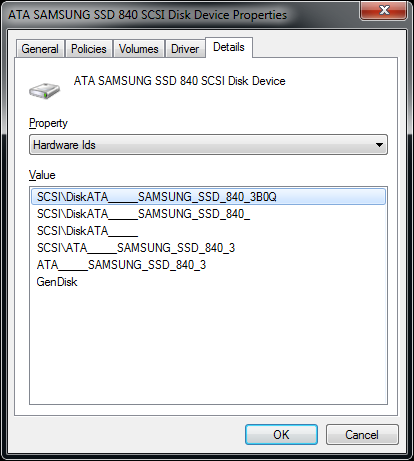



 Quote
Quote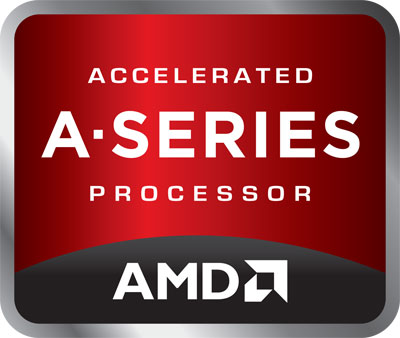
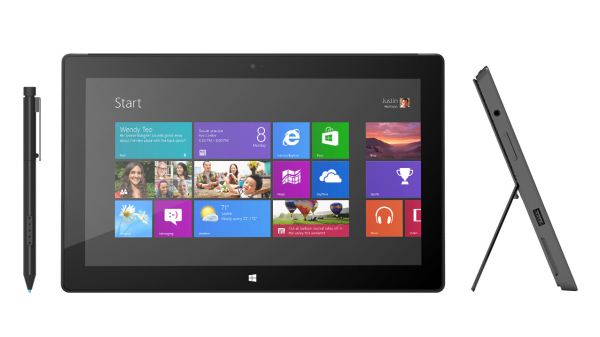
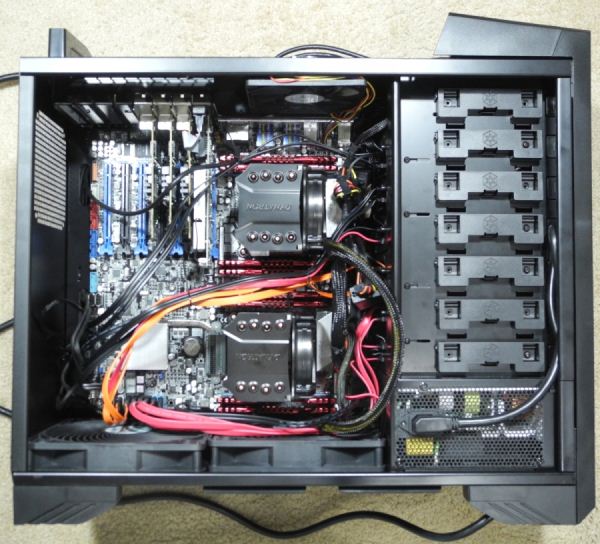

.jpg)

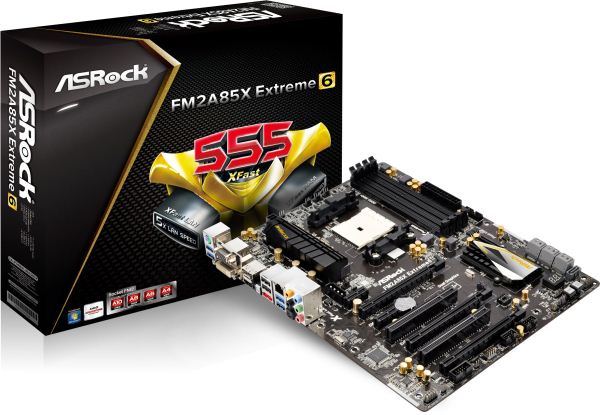
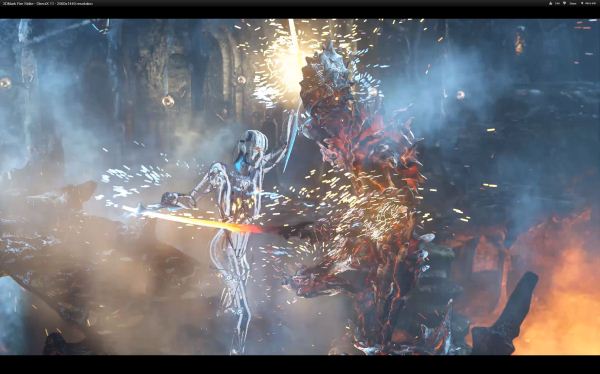

















Bookmarks